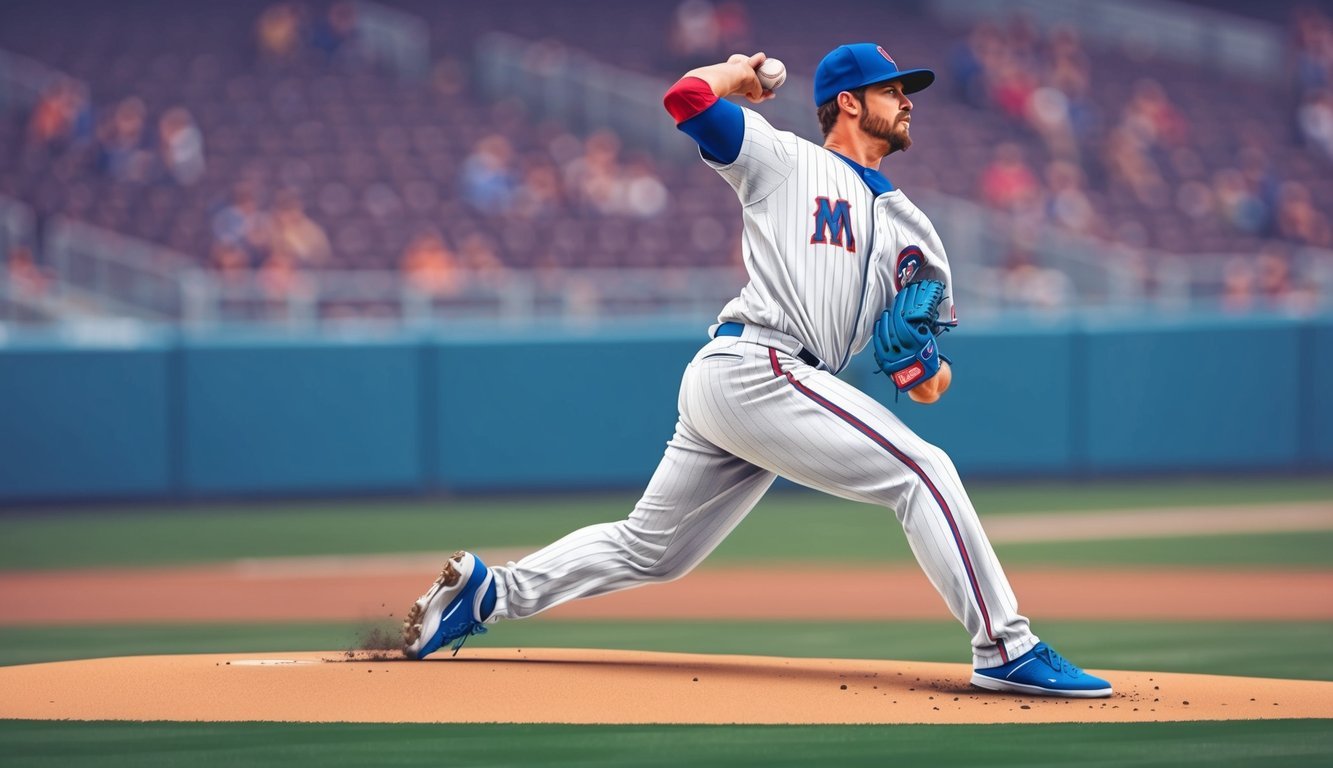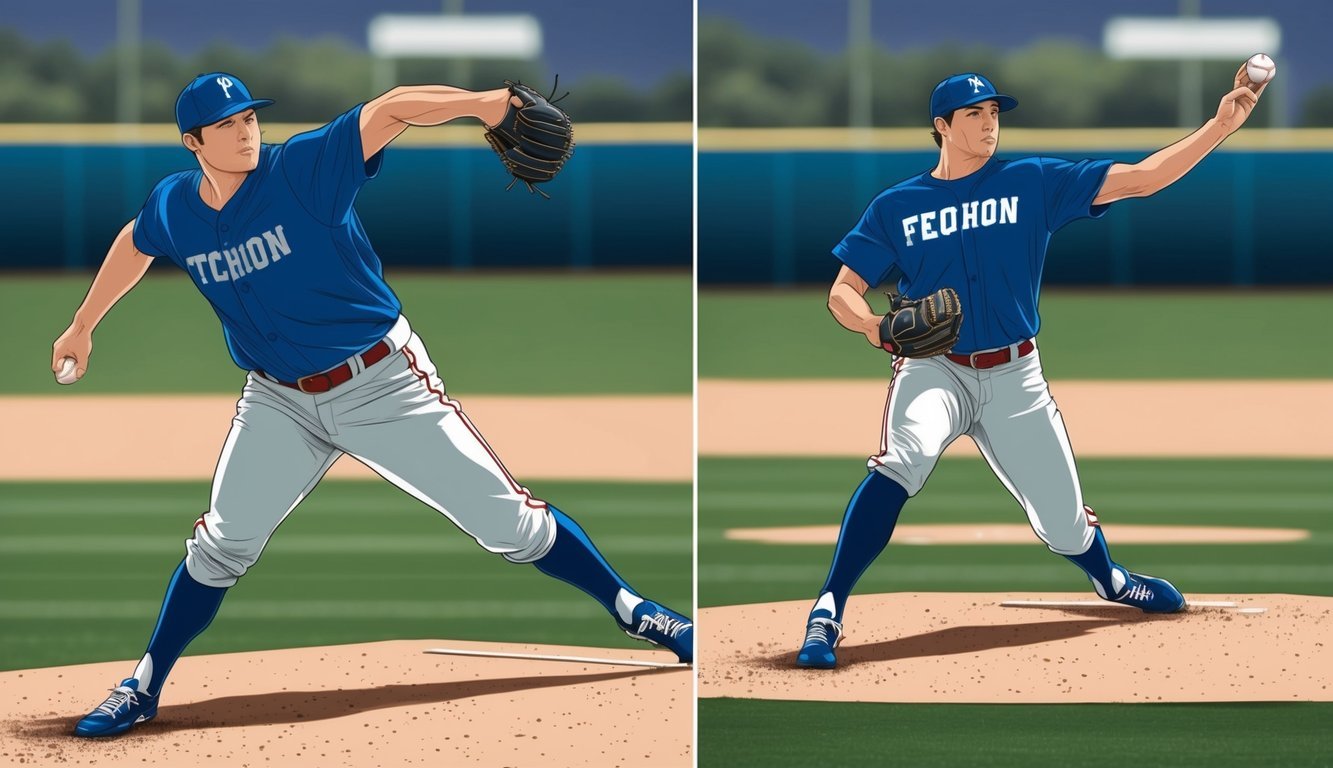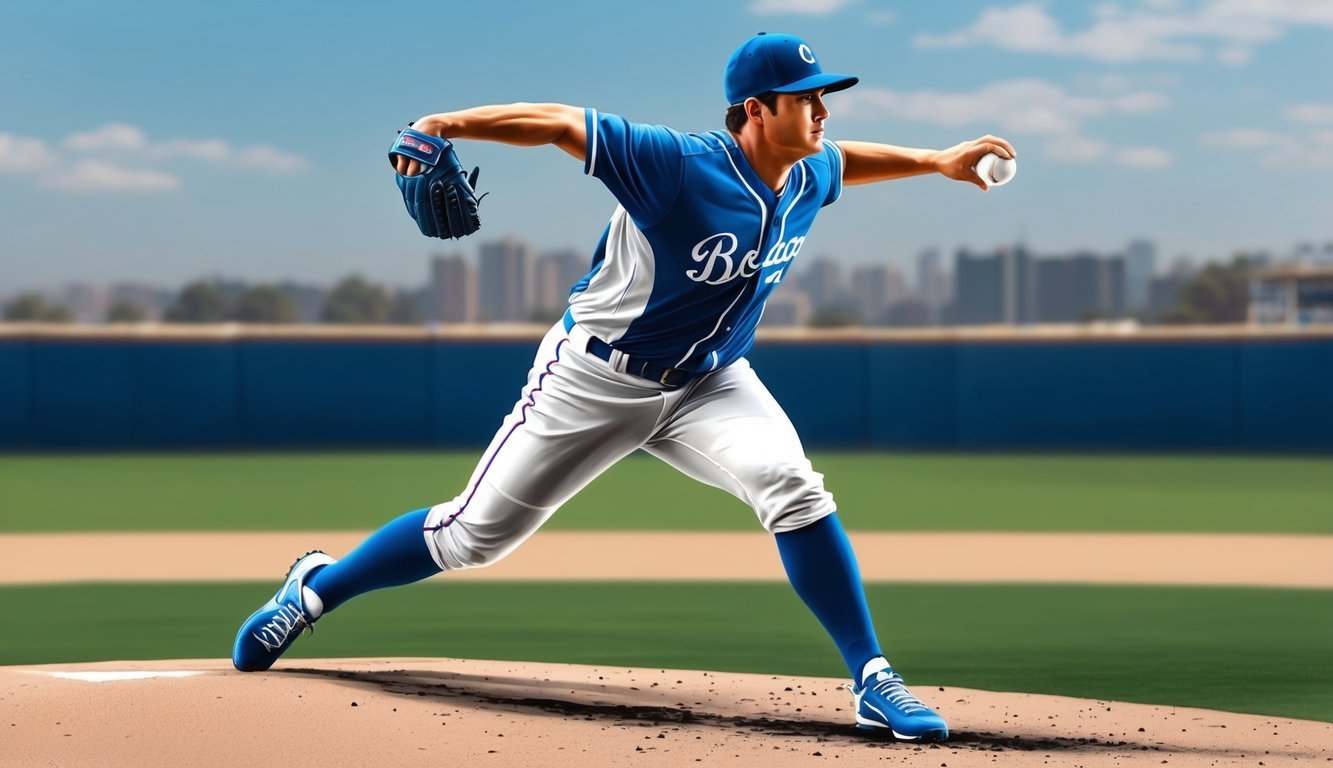Pitching a baseball is a fundamental skill that can make or break a game.
Mastering the art of pitching requires proper mechanics, technique, and practice. A good pitch combines power, accuracy, and deception to keep batters guessing and swinging.
Learning to pitch effectively starts with understanding the basic steps.
From the starting stance to the follow-through, each movement plays a crucial role in delivering a successful pitch.
Proper grip, foot placement, and body positioning are essential elements that contribute to both speed and control.
Aspiring pitchers can improve their skills by focusing on key aspects like balance, timing, and arm action.
With dedication and the right guidance, anyone can develop the ability to throw strikes consistently and keep batters off balance.
Whether you’re a beginner or looking to refine your technique, mastering the fundamentals of pitching can elevate your game to new heights.
Basics of Pitching
Pitching forms the foundation of baseball’s defensive strategy.
It requires a combination of physical skill, mental focus, and strategic thinking to effectively deliver the ball to home plate.
Understanding the Pitcher’s Role
The pitcher stands at the center of the action on the baseball diamond.
Their primary goal is to throw the ball in a way that prevents batters from making solid contact.
Pitchers must master proper mechanics to generate velocity and control while minimizing injury risk.
Good pitching mechanics start with a balanced stance on the mound.
As the pitcher begins their motion, they shift their weight and rotate their body to generate power.
The arm follows a whip-like path, culminating in ball release at the optimal point.
Consistency is key.
Pitchers practice their delivery thousands of times to develop muscle memory.
They also work on hiding their grip and maintaining the same arm speed for different pitches to keep batters guessing.
Pitch Types and Their Purposes
Pitchers use various pitch types to keep hitters off balance.
The fastball is the most common, relying on speed to overpower batters.
Breaking balls like curveballs and sliders use spin to create movement.
These pitches appear to be heading one way before sharply changing direction.
Changeups are thrown with the same arm speed as fastballs but arrive much slower, disrupting a batter’s timing.
Other pitch types include:
- Cutter: A fastball with slight lateral movement
- Sinker: A fastball that drops as it reaches the plate
- Knuckleball: A slow pitch with unpredictable movement
Pitchers mix these offerings to exploit batter weaknesses and create favorable counts.
Pitching Techniques
Mastering pitching techniques is crucial for baseball success.
It involves perfecting the wind up, stretch position, and grip fundamentals to maximize velocity and control.
Additionally, pitchers must develop a keen understanding of the game situation and their opponent’s weaknesses to make strategic decisions on the mound.
Likewise, mastering baseball base running techniques is essential for creating scoring opportunities and capitalizing on defensive mistakes.
By honing these skills in tandem, players can elevate their overall performance and contribute significantly to their team’s success.
Mastering the Wind Up
The wind up is a pitcher’s initial stance and motion.
Start with feet together on the rubber, facing home plate.
Raise your lead leg, bringing your knee up to chest level.
This creates momentum and balance.
As you lower your leg, pivot on your back foot and rotate your hips towards home plate.
Keep your eyes fixed on the target throughout the motion.
Your pitching arm should make a circular motion, ending up in the “power position” behind your body.
Timing is key.
Synchronize your leg drop with your arm movement for optimal power transfer.
Practice this motion repeatedly to develop muscle memory and consistency.
Perfecting the Stretch Position
The stretch position is used with runners on base.
Stand sideways on the rubber, feet shoulder-width apart.
Keep your weight on your back leg.
Hold the ball in your glove at chest level.
As you begin your motion, slightly lift your front leg.
This subtle movement helps disguise your intentions from baserunners.
Quickly shift your weight forward as you step towards home plate.
Your arm should follow, moving from the glove to the throwing position.
Maintain a consistent rhythm to avoid tipping off batters or baserunners.
Focus on a quick, compact delivery to limit stolen base attempts.
Practice holding runners by varying your timing and looking towards first base occasionally.
Grip and Release Fundamentals
Proper grip is essential for control and velocity.
For a four-seam fastball, place your index and middle fingers across the seams.
Your thumb should rest underneath, forming a “C” shape.
Experiment with different grips for various pitches.
A two-seam fastball grip along the seams can create movement.
Curveballs require placing your middle finger along a seam for spin.
At release, keep your wrist firm and fingers on top of the ball.
Snap your wrist forward for extra velocity.
Follow through by bringing your pitching arm across your body.
Arm angle affects pitch movement.
A higher arm slot typically produces more downward movement, while a lower angle can create more lateral break.
Practice different grips and release points to expand your pitching arsenal.
Remember, consistency in your grip and release is key to commanding your pitches.
Developing Core Pitches

Mastering a diverse pitching arsenal is crucial for success on the mound.
A well-rounded pitcher can keep batters guessing and maintain dominance throughout a game.
Fastball Proficiency
The fastball forms the foundation of most pitching repertoires.
Two main types are the four-seam and two-seam fastballs.
The four-seamer offers maximum velocity and a straight trajectory.
Pitchers grip it across the horseshoe seams for optimal backspin.
Two-seamers, or sinkers, have slightly less velocity but more movement.
Gripped along the seams, they tend to drop and tail away from same-sided batters.
Developing command of both fastball types gives pitchers versatility in attacking hitters.
Practice drills focusing on mechanics and release point consistency help improve fastball control.
Throwing at various targets and distances builds accuracy.
Pitchers should also work on varying speeds to keep hitters off-balance.
Breaking Balls and Off-Speed Mastery
Breaking pitches like curveballs and sliders create deception through spin and movement.
Curveballs have a 12-6 or 11-5 break, depending on arm angle.
Meanwhile, sliders have a tighter spin and later break.
The changeup is a crucial off-speed pitch.
It looks like a fastball but arrives much slower, disrupting timing.
The circle changeup grip is popular for its ease of use and effectiveness.
Mastering these pitches requires patience and practice.
Pitchers should focus on maintaining arm speed and mechanics similar to their fastball.
This disguises the pitch type from batters.
Regular bullpen sessions allow pitchers to refine their breaking and off-speed offerings.
Working with catchers helps gauge movement and effectiveness against live batters.
Specialty and Trick Pitches
Advanced pitchers may explore specialty pitches to further expand their arsenal.
The knuckleball, thrown with minimal spin, has an erratic flight path.
It’s challenging to master but can be highly effective.
The forkball and split-finger fastball are similar pitches with sharp downward movement.
They’re gripped between the first two fingers and can be devastating out pitches.
The screwball, though rare, moves in the opposite direction of a curveball.
It can be a unique weapon against opposite-handed hitters.
These specialty pitches often require significant practice to develop consistency.
Pitchers should consult with coaches before adding them to ensure proper technique and avoid injury risks.
Pitching Mechanics

Effective pitching mechanics are crucial for maximizing velocity, accuracy, and preventing injury.
Mastering the fundamental elements of the pitching motion enables pitchers to deliver consistent, powerful throws.
Creating Momentum and Balance
The pitching motion begins with a stable, balanced stance on the mound.
Feet should be shoulder-width apart, with weight evenly distributed.
As the pitcher initiates their windup, they shift their weight onto the back leg, creating momentum.
The leg lift is a key component, with the front knee rising to at least waist height.
This movement helps generate power and timing for the pitch.
Throughout this phase, maintaining balance is essential to ensure a smooth transition into the stride.
Pitchers often develop a unique rhythm in their windup, which can help with consistency and timing.
However, the core principles of balance and momentum generation remain constant across different pitching styles.
Strike Zone Command
Commanding the strike zone is vital for a pitcher’s success.
This skill involves consistently locating pitches within the area over home plate, from the batter’s knees to the midpoint between their shoulders and belt.
Proper arm positioning and release point are crucial for accurate pitch placement.
The pitcher’s arm should form an “L” shape at the peak of the leg lift, with the ball hidden behind the body.
As the pitcher strides forward, their arm accelerates, whipping through a circular motion.
The release point should be consistent for all pitch types to avoid tipping off batters.
Practice drills focusing on hitting specific targets within the strike zone can greatly improve a pitcher’s command.
Energy Transfer and Follow-Through
The final phase of pitching mechanics involves transferring energy from the lower body to the throwing arm and completing the follow-through.
As the pitcher’s front foot lands, their hips rotate explosively, followed by the upper body and throwing arm.
This kinetic chain allows for maximum velocity and control.
The non-throwing arm pulls down and back, helping to accelerate the pitching motion.
At release, the pitcher’s body should be in a straight line from head to toe, with the back leg coming forward.
A full follow-through is crucial for both power and injury prevention.
The throwing arm should continue its arc, with the pitcher’s momentum carrying them toward home plate.
This deceleration phase helps distribute the stress of pitching across the entire body.
Physical and Mental Preparation

Successful pitching requires a combination of physical fitness and mental fortitude.
Pitchers must develop their bodies to withstand the rigors of throwing while honing their minds to handle the pressures of the game.
Conditioning and Injury Prevention
Baseball pitchers need a solid conditioning routine to maintain arm strength and prevent injuries.
Regular exercises focusing on the rotator cuff, shoulder, and core muscles help build endurance and stability.
Pitchers should incorporate cardio workouts to improve stamina for long innings.
Proper warm-up routines are crucial.
Dynamic stretching before throwing loosens muscles and increases flexibility.
After pitching, ice therapy can reduce inflammation and aid recovery.
Many MLB teams now use advanced biomechanics analysis to identify potential injury risks in a pitcher’s motion.
This technology helps coaches refine mechanics for better performance and longevity.
Strategic Mindset and Game Situations
A pitcher’s mental game is just as important as physical skills.
Pitchers who develop a strategic mindset can navigate different game situations with confidence.
Visualization techniques can improve focus and reduce anxiety on the mound.
Before taking the field, pitchers often imagine successful outcomes.
Deep breathing exercises between pitches also help maintain composure during high-pressure moments.
Understanding batter tendencies and pitch sequencing is key.
Pitchers study scouting reports and work with catchers to create effective game plans.
They also learn to read swings and adjust their approach throughout the game.
Mental toughness allows pitchers to bounce back from mistakes.
Top MLB pitchers cultivate a short memory, quickly moving past bad pitches or innings to refocus on the next batter.
